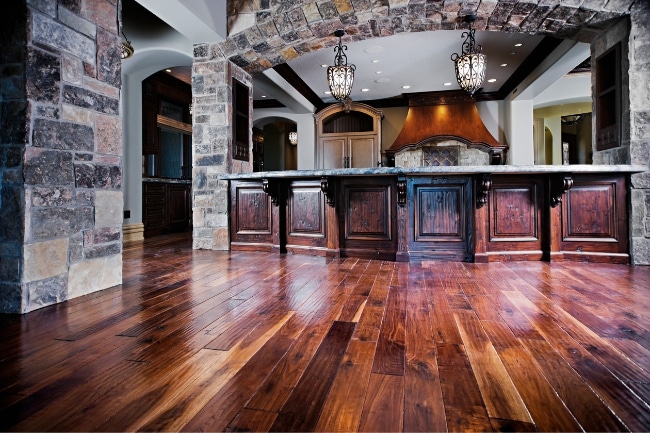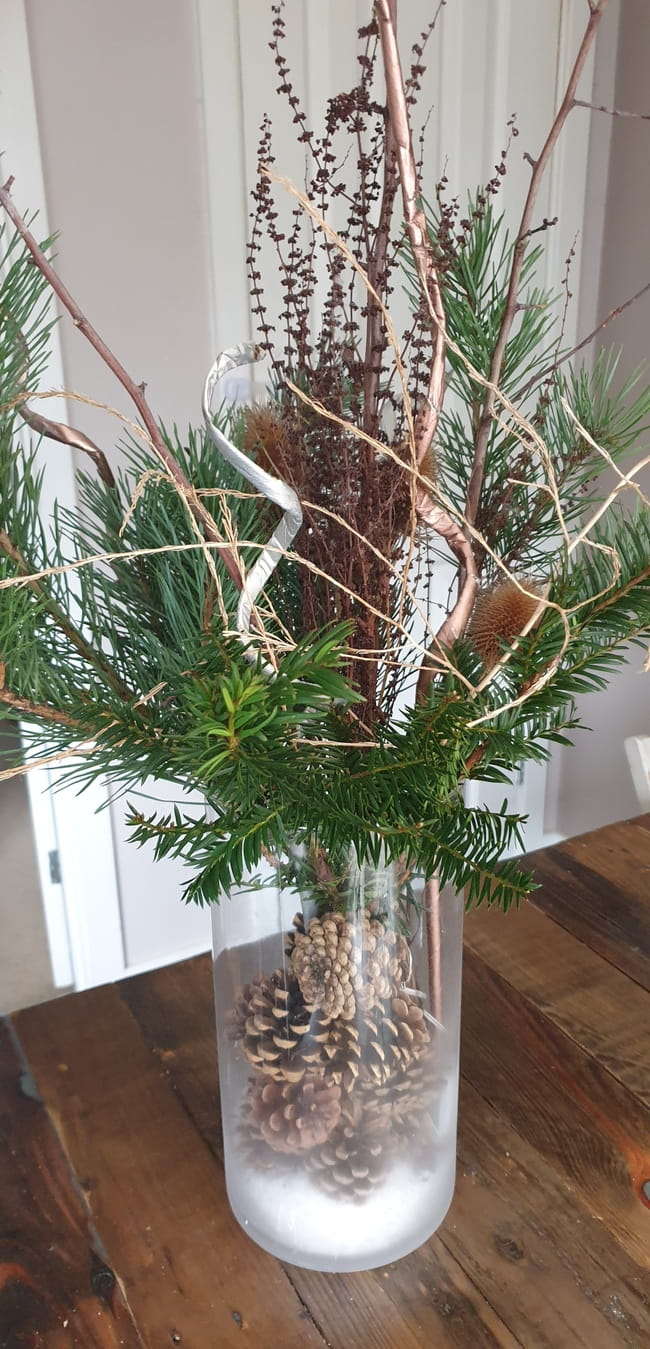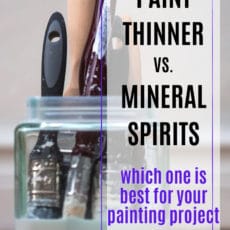Mineral Spirits vs Paint Thinner: Which is Better for Your Painting Project?
This post includes affiliate links. If you decide to make a purchase through my link, I might get a small commission for it at no additional cost to you. Thank you for supporting Upcycle This DIY That!
Painting is a fun, creative activity that many people enjoy. But when it comes to buying the paint and other painting materials, it can be a daunting task.
Mineral spirits vs paint thinner: which one should you choose? This blog post will compare mineral spirits vs. paint thinner to help you make an informed decision about what type of solvent to use for your next painting project.
YOU MAY ALSO BE INTERESTED IN:
Removing Paint From Wood -Tips, Tricks, And Techniques
How To Seal Wood And Furniture For High Traffic Areas
Staining Pallets and Wood – The Ultimate Guide For Upcycling And Pallet Projects
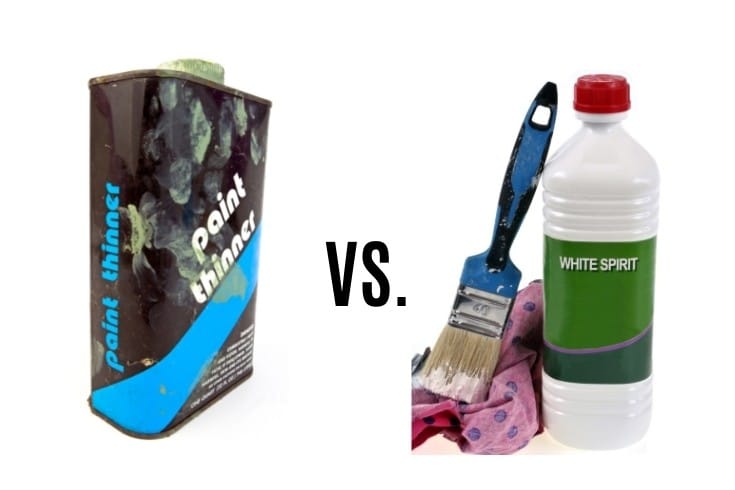
What are mineral spirits?
Mineral spirits (also called white spirits in the UK)are a clear, colorless, volatile liquid typically used as thinner for paints and varnishes. It’s also popular with woodworkers who want to create a fine finish on their workpieces.
The term “mineral spirit” can be somewhat misleading since it’s not made from minerals at all. The name was coined during the Industrial Revolution era when people looked for an alternative to turpentine (made from pine trees).
Mineral spirits is a product that can be used to clean and thin oil-based paints, varnishes, stains, and finishes. It’s typically made of petroleum distillates with mineral additives.
This solvent has many different uses: cleaning brushes before painting, removing old paint or other materials from surfaces, adding fluidity to paint when it’s too thick and more.
How are mineral spirits made?
Today, mineral spirits are often manufactured using petroleum distillates or natural gas liquids, which produce chemicals like pentane and butane.
The process starts by heating crude oil in a distillation tower. The resulting vapor is then cooled and condensed to form liquid petroleum products, including mineral spirits.
Mineral spirits are less volatile than other solvents, such as paint thinner or turpentine. Mainly because they have been distilled from the heavier fractions of crude oil, containing little benzene or aromatic compounds.
This means that mineral spirits evaporate more slowly and produce significantly smaller amounts of noxious vapors when compared with higher-boiling point solvents like acetone or methyl alcohol (methanol).
Mineral Spirits are also not as toxic as some solvent types, such as ethyl ether. However, they can still irritate the skin upon prolonged contact. Hence, it’s always essential to wear gloves and use a respirator while using them for your projects.
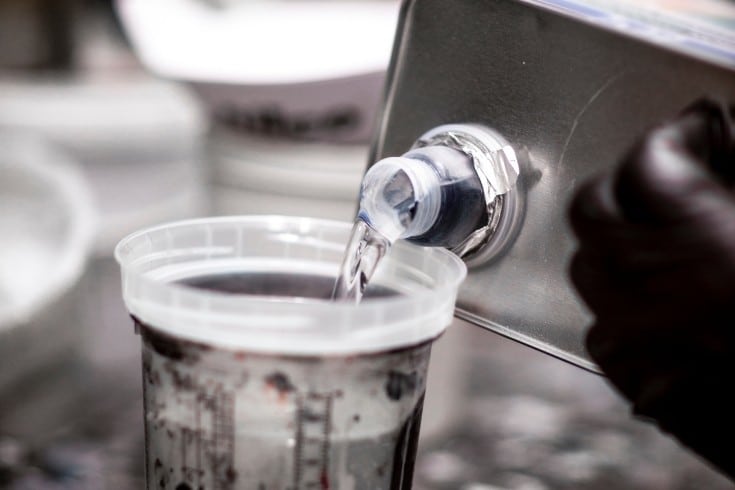
Benefits of Using Mineral Spirits Over Paint Thinners – Less Odor, Higher Cost, More Refined
A paint thinner is often a more economical choice compared to mineral spirits. But because it is not as highly refined as mineral spirits, paint thinner contains a higher percentage of odoriferous and volatile organic compounds.
Mineral spirits are more expensive because they require an extra distillation process to remove the solvent’s impurities. Many brands of odor-free mineral spirits are available on the market.
The main downside of paint thinner is its strong smell and higher toxicity. Hence, it’s definitely something to consider when deciding which product would be best for your projects.
Mineral Spirits Vs Paint Thinner- Why should I choose one over the other?
The main benefit of mineral spirits is that it’s stronger than paint thinner and does not have such a strong odor. This might be a significant consideration in choosing between these two products for those sensitive to the smell.
Mineral spirits are also less toxic and tend to evaporate faster than paint thinners, resulting in a smoother paint coat. You can also use it to remove paint as well as oils and tar from larger surfaces.
It’s a great all-around cleaning agent for getting rid of gunk on tools like garden shears and saws, metal or wood worktops, and concrete floors—you name it!
Some people mistakenly believe that paint thinner is the safe choice for a solvent because it’s less expensive and easier to find. But in reality, mineral spirits are much safer than paint thinners!
A paint thinner can emit toxic fumes such as noxious compounds like benzene when being mixed. On the other hand, mineral spirits have fewer harmful chemicals, making them more environmentally friendly and safer for you.
So if safety matters most to you, then go with mineral spirit from here on out. If you need something cheaper, then paint thinner is the way to go.
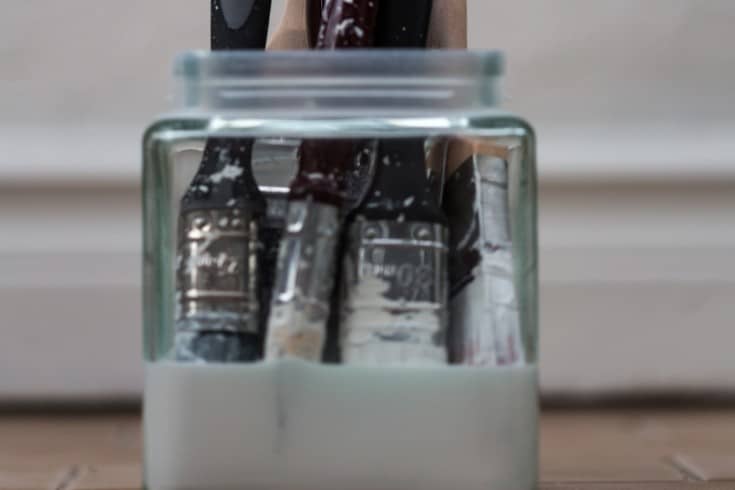
When should I not use mineral spirits or paint thinner?
If you’re working with latex or water-based paints, then mineral spirits and paint thinners are not recommended. This is because these paints have water as the base solvent.
The mineral spirits or paint thinners can cause the separation of the paint pigment from the paint solvents during a thinning application.
Or they simply won’t remove any paint residue from the paintbrushes or rollers during cleaning. You’ll want to use mineral spirits and paint thinner for oil-based paints and water or latex-based paint thinner with latex for water-based paints.
conclusion
I hope this post has helped you better understand the difference between mineral spirits vs paint thinner and when they’re appropriate to be used, and when it’s not recommended to work with them!
Whether you’re a DIYer or professional, with these tips, you now know how to use them properly, and you’re ready to decide which is better for your next DIY painting project.
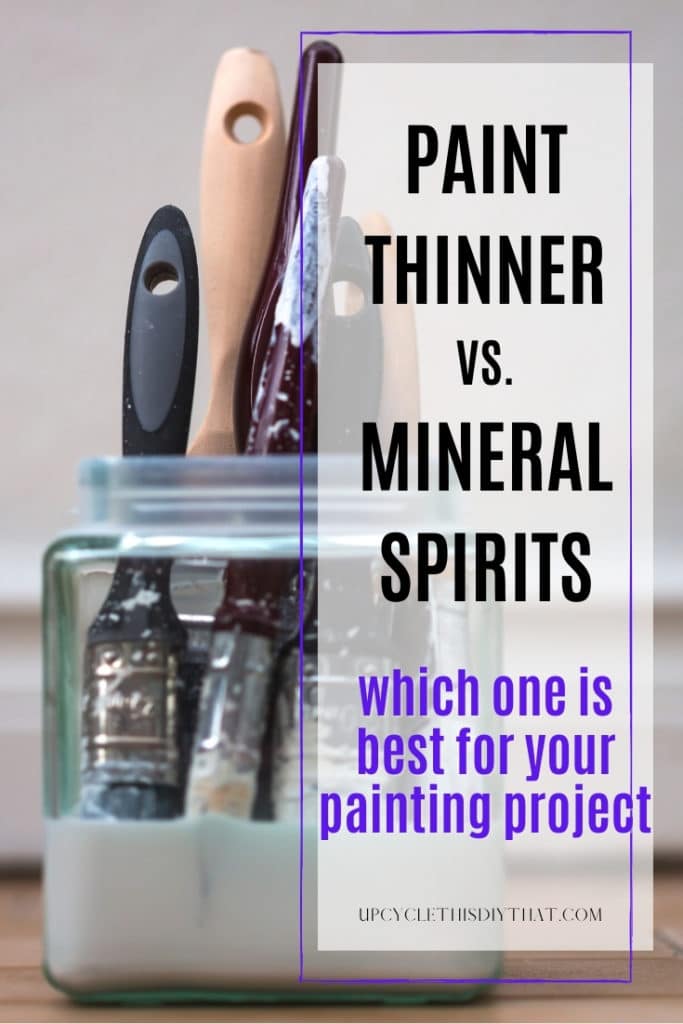
Subscribe To My FREE DIY Newsletter!
Stay in touch and receive things like updates, special offers, new projects, tips, gear reviews, and more. No spam, promise!
By entering your email address, you agree to get an email newsletter from UpcycleThisDIYThat. I’ll respect your privacy, and you can unsubscribe at any time. For more details, review our Privacy Policy.



